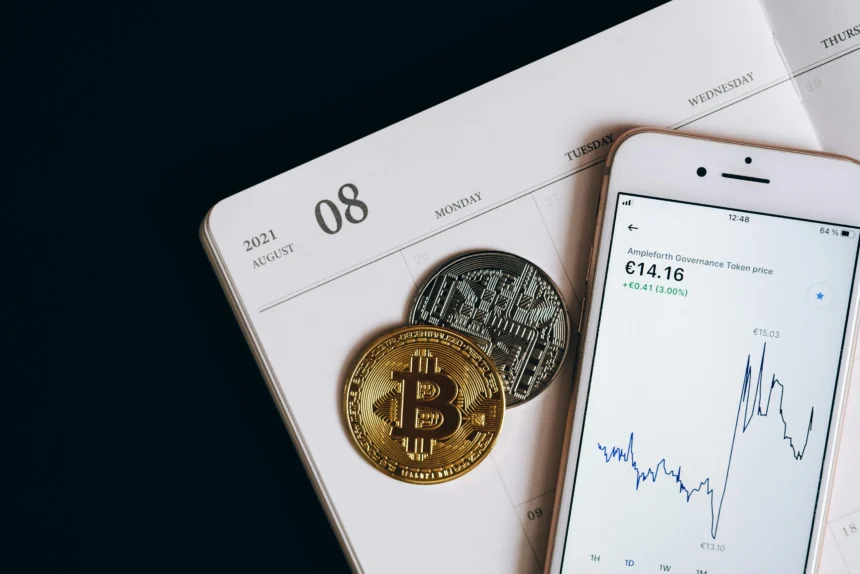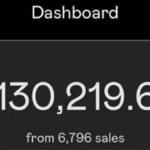The digital world is buzzing with talk about blockchain, but many people still wonder, “what is blockchain exactly?” If you’ve ever felt confused by technical jargon or overwhelmed by complex explanations, you’re not alone. This comprehensive guide breaks down blockchain technology in simple terms, helping you understand why it’s considered one of the most revolutionary innovations of our time.
Whether you’re a complete beginner or someone looking to deepen your knowledge, this article will give you a clear, practical understanding of what blockchain is and why it matters in today’s digital landscape.
What is Blockchain: The Simple Definition
At its core, blockchain is a digital ledger that records transactions across multiple computers in a way that makes it nearly impossible to hack, change, or cheat. Think of it as a shared notebook that everyone in a network can see, but no single person can alter without everyone else knowing.
Unlike traditional databases controlled by a central authority, blockchain operates on a decentralized network. This means no single entity owns or controls the entire system. Instead, the network participants collectively maintain and verify the integrity of the data.
The name “blockchain” comes from its structure: information is stored in blocks, and these blocks are linked together in a chronological chain. Each block contains a group of transactions, and once a block is added to the chain, it becomes extremely difficult to modify.
How Does Blockchain Technology Work?
Understanding what is blockchain becomes clearer when you examine how the technology operates. The process involves several key steps that work together to create a secure, transparent system.
The Block Structure
Each block in a blockchain contains four main components:
- Transaction data: The actual information being recorded
- Timestamp: When the block was created
- Hash: A unique digital fingerprint for that specific block
- Previous hash: The digital fingerprint of the previous block in the chain
This linking system creates an unbreakable chain where each block depends on the one before it. If someone tries to alter information in one block, it would change that block’s hash, breaking the chain and alerting the entire network to the tampering attempt.
The Verification Process
When someone initiates a transaction, the blockchain network follows these steps:
- Transaction announcement: The transaction is broadcast to the network
- Validation: Network participants (called nodes) verify the transaction’s legitimacy
- Block creation: Verified transactions are grouped together into a new block
- Consensus: The network agrees on the new block through various consensus mechanisms
- Addition: The new block is added to the chain and distributed across the network
Cryptographic Security
Blockchain uses advanced cryptography to secure data. Each participant has a pair of cryptographic keys: a public key (like an email address that others can see) and a private key (like a password that only you know). This system ensures that only authorized parties can access and modify their own data.
Types of Blockchain Networks
When exploring what is blockchain, it’s important to understand that not all blockchains are created equal. There are several different types, each designed for specific purposes and use cases.
Public Blockchains
Public blockchains are completely open and decentralized. Anyone can join the network, view transactions, and participate in the consensus process. Bitcoin and Ethereum are the most famous examples of public blockchains.
Characteristics:
- Fully decentralized
- Maximum transparency
- High security through widespread participation
- Slower transaction speeds due to consensus requirements
Private Blockchains
Private blockchains are controlled by a single organization and restrict access to specific participants. These are often used by businesses that want blockchain’s benefits while maintaining control over their data.
Characteristics:
- Centralized control
- Limited access
- Faster transaction speeds
- Enhanced privacy for sensitive business data
Consortium Blockchains
Consortium blockchains represent a middle ground between public and private networks. They’re controlled by a group of organizations rather than a single entity, making them semi-decentralized.
Characteristics:
- Partially decentralized
- Controlled by trusted organizations
- Balanced security and efficiency
- Common in industry collaborations
Hybrid Blockchains
Hybrid blockchains combine elements of both public and private networks, allowing organizations to control access while maintaining some level of decentralization.
Real-World Applications of Blockchain Technology
Understanding what is blockchain becomes more meaningful when you see how it’s being applied across various industries. The technology extends far beyond cryptocurrencies, offering solutions to real-world problems.
Financial Services
The financial industry was blockchain’s first major adopter, and it continues to lead in innovative applications:
- Cross-border payments: Reducing transfer times from days to minutes
- Trade finance: Streamlining complex international trade processes
- Digital identity: Securing customer identification and reducing fraud
- Smart contracts: Automating financial agreements and reducing costs
Supply Chain Management
Blockchain provides unprecedented transparency and traceability in supply chains:
- Food safety: Tracking produce from farm to table to quickly identify contamination sources
- Luxury goods authentication: Preventing counterfeiting of high-value items
- Pharmaceutical tracking: Ensuring medication authenticity and preventing fake drugs
- Sustainable sourcing: Verifying ethical production practices
Healthcare
The healthcare industry is leveraging blockchain to address critical challenges:
- Medical records: Securing patient data while enabling authorized access
- Drug development: Ensuring clinical trial data integrity
- Medical device security: Protecting connected healthcare devices from cyber attacks
- Health insurance: Streamlining claims processing and reducing fraud
Real Estate
Blockchain is transforming how property transactions are conducted:
- Property records: Creating immutable ownership histories
- Smart contracts: Automating property transfers and reducing paperwork
- Fractional ownership: Enabling shared ownership of expensive properties
- Rental agreements: Streamlining lease processes and security deposits
Voting and Governance
Governments are exploring blockchain for more transparent and secure voting systems:
- Election integrity: Creating tamper-proof voting records
- Identity verification: Ensuring only eligible voters participate
- Transparent governance: Making government processes more accountable
- Citizen services: Streamlining public service delivery
Key Benefits of Blockchain Technology
When asking what is blockchain, it’s crucial to understand the advantages that make this technology so revolutionary. These benefits address many limitations of traditional systems.
Decentralization
Traditional systems rely on central authorities, creating single points of failure. Blockchain distributes control across a network, making systems more resilient and reducing dependency on intermediaries.
Transparency
All network participants can view transaction histories, creating unprecedented levels of transparency. This openness builds trust and enables better accountability in business processes.
Security
The combination of cryptographic protection, distributed networks, and consensus mechanisms makes blockchain extremely secure. Altering records would require controlling the majority of the network, which is practically impossible in well-designed systems.
Immutability
Once data is recorded in a blockchain, it becomes extremely difficult to change. This creates a permanent, auditable record that’s valuable for compliance and historical tracking.
Reduced Costs
By eliminating intermediaries and automating processes through smart contracts, blockchain can significantly reduce transaction costs and processing times.
Global Accessibility
Blockchain networks operate 24/7 without geographical restrictions, enabling global participation and removing barriers that traditional systems often impose.
Common Challenges and Limitations
While exploring what is blockchain reveals many benefits, it’s important to understand the current limitations and challenges facing the technology.
Scalability Issues
Most blockchain networks can only process a limited number of transactions per second. Bitcoin handles about 7 transactions per second, while Ethereum manages around 15. This is far below the thousands of transactions per second that traditional payment systems can handle.
Energy Consumption
Some blockchain networks, particularly those using proof-of-work consensus mechanisms, consume enormous amounts of energy. Bitcoin’s network uses more electricity annually than some entire countries.
Regulatory Uncertainty
The regulatory landscape for blockchain technology is still evolving. Unclear or changing regulations can create uncertainty for businesses and slow adoption.
Technical Complexity
Implementing blockchain solutions requires specialized knowledge and skills. The complexity can be a barrier for organizations looking to adopt the technology.
Integration Challenges
Integrating blockchain with existing systems can be complex and expensive. Many organizations struggle with how to incorporate blockchain into their current infrastructure.
The Future of Blockchain Technology
Understanding what is blockchain also means looking ahead at how the technology might evolve. Several trends are shaping blockchain’s future development.
Improved Scalability Solutions
Developers are working on various solutions to address scalability challenges:
- Layer 2 solutions: Building additional layers on top of existing blockchains to increase transaction capacity
- Sharding: Dividing blockchain networks into smaller, more manageable pieces
- New consensus mechanisms: Developing more efficient ways to verify transactions
Environmental Sustainability
The industry is moving toward more environmentally friendly consensus mechanisms:
- Proof of Stake: Using far less energy than traditional proof-of-work systems
- Green blockchain initiatives: Focusing on renewable energy sources for blockchain operations
- Carbon-neutral networks: Developing blockchain systems with minimal environmental impact
Mainstream Adoption
As the technology matures, we can expect to see:
- User-friendly interfaces: Making blockchain applications as easy to use as traditional apps
- Enterprise integration: More businesses incorporating blockchain into their standard operations
- Government adoption: Public sector implementation of blockchain for various services
Interoperability
Future blockchain development will focus on:
- Cross-chain communication: Enabling different blockchain networks to work together
- Standardization: Developing common protocols for blockchain interoperability
- Unified ecosystems: Creating seamless experiences across multiple blockchain platforms
Getting Started with Blockchain
If you’re interested in exploring blockchain technology further, here are practical steps you can take:
Education and Learning
- Online courses: Platforms like Coursera, edX, and Udemy offer comprehensive blockchain courses
- Technical documentation: Reading whitepapers and technical guides from major blockchain projects
- Industry news: Following reputable blockchain news sources and thought leaders
- Community participation: Joining blockchain communities and forums for discussions and networking
Hands-On Experience
- Cryptocurrency wallets: Creating and using digital wallets to understand transaction processes
- Demo applications: Exploring blockchain-based applications and platforms
- Development tools: For technical users, experimenting with blockchain development frameworks
- Testnet participation: Using test networks to experiment without real-world consequences
Internal Linking Opportunities
Throughout this article, consider linking to related content:
- [link to cryptocurrency basics guide]
- [link to smart contracts explained]
- [link to blockchain security best practices]
- [link to cryptocurrency investment guide]
- [link to DeFi (Decentralized Finance) overview]
- [link to NFT explanation article]
- [link to blockchain career opportunities]
External Linking Suggestions
For additional credibility and resources, link to authoritative sources:
- Bitcoin whitepaper (bitcoin.org)
- Ethereum documentation (ethereum.org)
- IBM Blockchain resources (ibm.com)
- Deloitte blockchain insights (deloitte.com)
- MIT OpenCourseWare blockchain materials (ocw.mit.edu)
- World Economic Forum blockchain reports (weforum.org)
Frequently Asked Questions
What is blockchain in simple terms?
Blockchain is a digital ledger that records transactions across multiple computers in a way that makes the records secure and transparent. Think of it as a shared, tamper-proof notebook that everyone in a network can see but no one can alter without consensus from the group.
Is blockchain the same as cryptocurrency?
No, blockchain and cryptocurrency are not the same thing. Blockchain is the underlying technology that enables cryptocurrencies to exist, but blockchain has many other applications beyond digital currencies, including supply chain management, healthcare records, and voting systems.
How secure is blockchain technology?
Blockchain is highly secure due to its distributed nature, cryptographic protection, and consensus mechanisms. However, security also depends on the specific implementation and the size of the network. Larger, more established networks tend to be more secure than smaller ones.
Can blockchain be hacked?
While blockchain networks themselves are extremely difficult to hack due to their decentralized structure, individual wallets, exchanges, and applications built on blockchain can be vulnerable. The blockchain protocol is secure, but the surrounding infrastructure may have security weaknesses.
What industries benefit most from blockchain?
Industries that involve complex transactions, multiple parties, and trust requirements benefit most from blockchain. These include finance, supply chain management, healthcare, real estate, voting systems, and intellectual property management.
Do I need technical knowledge to use blockchain applications?
Not necessarily. While understanding blockchain technology can be helpful, many blockchain applications are designed to be user-friendly. You can use cryptocurrency wallets, participate in blockchain-based platforms, and benefit from blockchain applications without deep technical knowledge.
What’s the difference between Bitcoin and blockchain?
Bitcoin is a specific application of blockchain technology – it’s a cryptocurrency that uses blockchain as its underlying infrastructure. Blockchain is the broader technology that can support many different applications beyond Bitcoin, including other cryptocurrencies, smart contracts, and various business applications.
Conclusion
Understanding what is blockchain opens the door to comprehending one of the most significant technological innovations of our time. This revolutionary technology offers solutions to long-standing problems in trust, transparency, and intermediary dependence across numerous industries.
From its simple concept as a distributed ledger to its complex applications in finance, healthcare, supply chain management, and beyond, blockchain represents a fundamental shift in how we think about data storage, verification, and exchange. While challenges like scalability, energy consumption, and regulatory uncertainty remain, ongoing developments continue to address these limitations.
The future of blockchain looks promising, with improvements in scalability, environmental sustainability, and user experience making the technology more accessible and practical for mainstream adoption. Whether you’re a business leader considering blockchain implementation, an investor exploring opportunities, or simply someone curious about emerging technologies, understanding what is blockchain provides valuable insight into the digital future.
As blockchain technology continues to evolve and mature, staying informed about its developments and applications will become increasingly important. The key is to approach blockchain with both enthusiasm for its potential and realistic expectations about its current limitations. By doing so, you’ll be well-positioned to navigate and benefit from the blockchain revolution as it unfolds.









